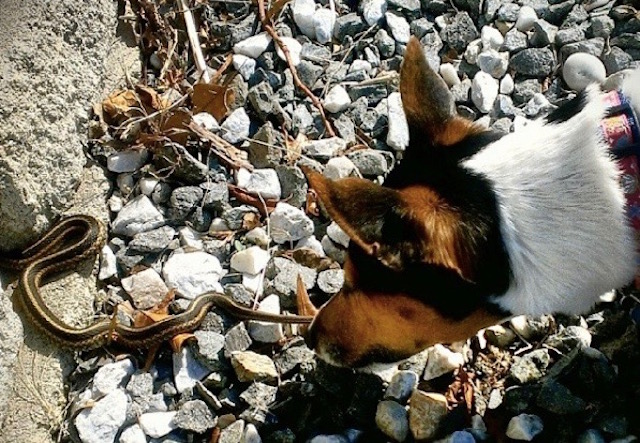There are venomous snakes out there and your dog is a nosy character. Let’s face it, he might just borrow some trouble and bug a snake. If you suspect that your dog has been bitten by a snake, here are some important things NOT to do.
#1. Never risk yourself.
It is important to try to identify the snake, but not if it puts you in harm’s way. After all, who will take care of your dog if you are bitten too?

#2. Never place a tourniquet.
In the old days, we were taught to try to seal off the area to try to prevent spread of the venom. Nowadays, the thought is that the pressure causes tissue damage, increasing the pain and slowing healing. It is a good idea to keep your dog as quiet as possible to slow the venom that way.
#3. Never try to suck or squeeze out the venom.
This is another old school recommendation that has outlived its usefulness. The act of cutting, sucking or squeezing will damage tissue even more and certainly frighten your dog.
#4. NEVER ever, ever try to manage a venomous snake bite without veterinary help.
These toxins have evolved over generations to be effective killers. They have different mechanisms, but all venom is designed to kill. Even if your dog did not get a lethal dose, the toxin will be painful and life-threatening. This is not a case when watching and waiting is a good idea.

If you hear your dog yelp in pain and surprise, while investigating in grass or leaves, he may have been snake bitten. Usually, you can visibly see puncture wounds with dark bloody fluid leaking out. He will seem to be in pain and probably shock. Don’t delay. Get him to the nearest animal ER as quickly as you can safely transport him. Quiz everyone around about if they saw the snake and tell the veterinarian your suspicion. It is a good idea to be aware of what types of snake are prevalent in the areas you frequent. Keep your dog on a leash if possible and make sure he does not put his nose into places that you cannot see what might be there. Snakes are frightening, but we are the ones nosing around in their back yards. Knowing what not to do is sometimes the most important part!
Want to learn more about things that can harm dogs and what you can do? Follow the conFURsation over on Facebook by clicking here.
